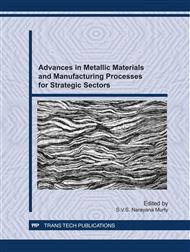p.545
p.551
p.557
p.563
p.569
p.575
p.581
p.588
p.594
Wetting Characteristics of Sn-0.7Cu Lead-Free Solder Alloy on Copper Substrates
Abstract:
In the present work, the effect of surface texture on wetting characteristics of lead-free solder Sn-0.7Cu on copper substrates have been investigated at 298°C. The wetting tests were carried out using FTA 200 (First Ten Angstrom) dynamic contact angle analyzer. The surface texture of copper substrate significantly affected the wetting properties of Sn-0.7Cu solder alloy. Contact angles of about 30° were obtained on Cu substrate having smooth surface texture (Ra = 0.0155µm). On other hand contact angles on rough copper surface texture (Ra = 1.1194µm) were reduced to 20°. The contact angles decreased with increasing surface texture of Cu substrate. For rough Cu substrate, it seems that the solder atoms dissolve into the substrate in the time period of 200-600s.
Info:
Periodical:
Pages:
569-574
Citation:
Online since:
January 2012
Authors:
Keywords:
Price:
Сopyright:
© 2012 Trans Tech Publications Ltd. All Rights Reserved
Share:
Citation:


